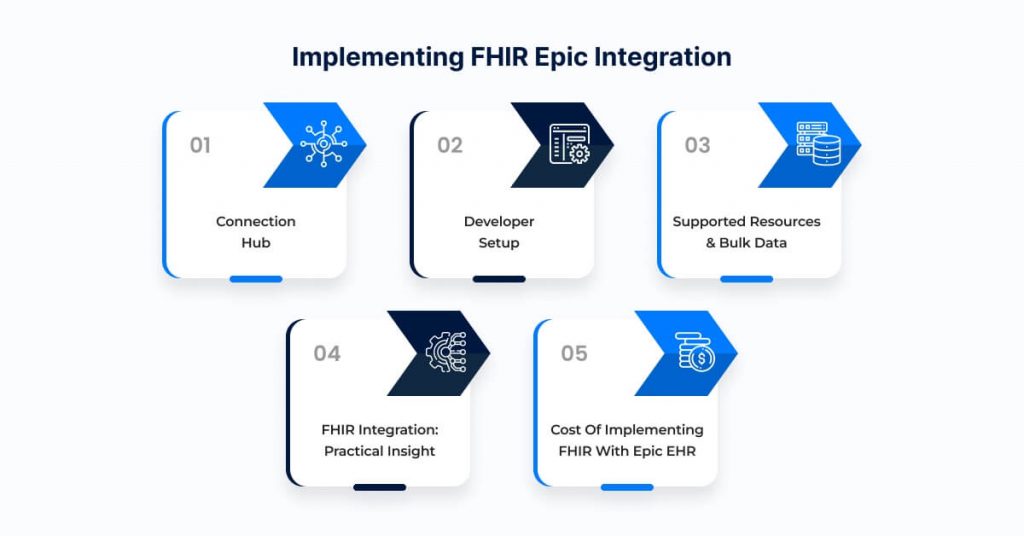Rural areas in the U.S. have less access to healthcare than cities. There are fewer specialists and worse health results. Some reasons for this include:
- Shortage of Specialists and Healthcare Providers: Many rural areas have too few doctors, specialists, nurses, and other health workers. Patients often must travel far to see specialists.
- Limited Healthcare Infrastructure: Rural communities often do not have hospitals or clinics with the advanced tools needed for specialty care.
- Poor Internet Access and Technology Availability: Reliable internet is not always available in remote places. This makes it hard to use telehealth.
- Socio-Economic Barriers: The cost of travel, lost work time, and child care stops some people from getting care.
These problems cause worse health and higher death rates in rural populations. New technology can help bring specialist care outside of hospitals and closer to these communities.
AI-Enabled Telemedicine: Connecting Rural Patients with Specialists
Artificial Intelligence (AI) combined with telemedicine can bring specialist care to patients at home or in local clinics. Patients far away can talk to specialists by secure video calls. AI helps with communication and medical decisions.
For example, virtual care centers in the Eastern Cape of South Africa use AI to provide care in places with poor tech access. Patients use diagnostic tools and talk to specialists with the help of local healthcare workers. Although this is outside the U.S., the idea could work in rural U.S. areas with similar problems.
In the U.S., telemedicine grew quickly during the COVID-19 pandemic. Virtual visits help rural patients manage chronic illness, behavioral health issues, and other complex conditions like skin problems and mental health therapy.
Remote Diagnostic Tools Powered by AI
Remote diagnostic tools are an important part of telemedicine. AI helps devices send medical images, vital signs, and other health data to specialists. This helps doctors check patients from far away with better accuracy and faster results.
AI can analyze X-rays, CT scans, and other imaging sent from rural clinics to specialists in cities. This helps where there are no radiologists nearby. Wearable devices with AI can watch chronic illnesses like heart disease and diabetes. These devices alert doctors early when patients need help.
Combining AI diagnostics with telemedicine makes remote specialist care more useful. Doctors get more data to make treatment plans without being in the same place as patients.
Impact on Autism Care: A Case Study in Telehealth Access Expansion
AI telemedicine has helped in areas like autism diagnosis and therapy. In rural places, it often takes a long time and a long trip to see autism specialists. This stops many families from getting needed care.
With telehealth and AI, behavior therapists can watch children remotely. They can give Applied Behavior Analysis (ABA) therapy and work with parents at home. Research shows this way costs about $2,100 per patient compared to $6,000 for in-person care. Families spend less money and stress but get similar results.
AI helps therapists by managing behavior data and making treatment plans based on what it sees. Some tools use sensors and emotional feedback devices to make care more personal.
AI’s Role in Improving Workflow and Administrative Efficiency
AI also improves office and administrative work in rural healthcare. Many small clinics have few staff and lots of paperwork.
One example is AI phone systems like Simbo AI. These use voice bots that talk like people to handle appointment bookings, cancellations, and rescheduling. This saves time for front desk workers so they can spend more time with patients.
Data from the Medical University of South Carolina (MUSC) shows AI saves front desk workers 3 to 5 minutes per patient. Over a month, that adds up to about 500 hours saved.
AI also speeds up insurance approvals. What used to take 15-30 minutes can take about one minute. Around 40% of requests can be done automatically. This helps clinics get paid faster and manage money better.
Doctors also benefit from AI that takes notes during patient visits. This reduces the time they spend writing reports at home by about one-third.
Considerations and Challenges in AI Adoption for Rural Healthcare
There are challenges in using AI and telemedicine in rural care:
- Trust and Transparency: Staff and patients must trust AI systems. Doctors must check AI advice to keep care safe.
- Technology Infrastructure: Good internet, devices, and support are needed. Without these, AI tools do not work well.
- Staff Training and Acceptance: Some workers may resist new tech. Training and help are important for success.
- Ethical and Regulatory Compliance: Protecting patient data, avoiding bias, and equal access are important. Clinics must follow laws and set clear rules.
- Patient Engagement: Patients must take part in telehealth. AI systems should respect culture and language differences. Help for patients with low tech skills is also needed.
Future Directions and Opportunities for Healthcare Administrators
AI in rural healthcare will grow with new tech like 5G, Internet of Medical Things (IoMT), and blockchain for secure data. These will help with real-time monitoring and better provider teamwork.
Healthcare leaders can improve their practices by:
- Working with AI telehealth and diagnostic tech providers.
- Investing in better internet and devices, using government or private funds.
- Setting policies for ethical AI use that follow laws.
- Helping patients and communities learn about AI tools.
- Using automation to save time in outpatient and specialty care.
AI and Workflow Automation: Enhancing Operational Efficiency in Rural Healthcare Practices
AI does more than patient care. It also improves how clinics run every day. This is important where staff and money are limited.
AI phone systems handle appointments without busy staff. AI voice bots can talk to patients naturally. This saves staff time and lets them focus on urgent care. MUSC saw big time savings using this tech.
In clinics, AI note-taking tools cut after-hours paperwork by up to 33%. This means doctors have more time with patients and can diagnose better.
AI also speeds up insurance approvals and billing. It handles many requests by itself. This makes money management faster and reduces care delays caused by insurance.
These AI tools help clinics run smoother, make more money, and keep staff happier. This is very important in rural areas with limited resources.
In Summary
Artificial intelligence, telemedicine, remote diagnostics, and workflow automation offer a practical way to improve specialist healthcare access in rural and underserved U.S. areas. Examples like MUSC and Aflu Med Healthcare show that these technologies can improve care without replacing important human judgment and communication.
Healthcare leaders and IT managers have an important role in using these tools carefully, making sure infrastructure is ready, and managing changes well. Using AI-driven telehealth and automation can help close the gap in healthcare access and improve care and operations in communities with many barriers to specialty care.
Frequently Asked Questions
What is Artificial Intelligence in Healthcare?
AI in healthcare refers to intelligent systems that learn from data, adapt responses, recognize patterns, make predictions, and process natural language. Unlike traditional rigid software, AI continuously improves and aids in solving clinical and administrative challenges without replacing human clinical judgment.
How does AI reduce no-show rates in healthcare settings?
AI reduces no-shows by proactively contacting patients with digital check-ins and appointment reminders, allowing them to confirm, cancel, or reschedule. At MUSC, this approach decreased no-show rates by nearly 4%, increased pre-visit check-in by 67%, and improved copay collection by 20%.
What are examples of AI tools used to reduce administrative burdens in hospitals?
Examples include digital check-in systems, AI voice bots like ‘Emily’ for patient communications, ambient scribing technology for automated clinical documentation, and intelligent automation of prior authorizations, all of which save time and improve workflow efficiency.
How do AI voice bots improve patient communication?
AI voice bots engage patients in natural conversations, replacing frustrating phone menus. They help with appointment management, confirmations, cancellations, and basic requests, improving patient satisfaction and freeing staff for more meaningful interactions.
What benefits do AI scribes provide to clinicians?
AI scribes automatically record doctor-patient conversations and generate clinical documentation, reducing after-hours charting time by 33% and nighttime documentation by 25%. This allows physicians to maintain eye contact, improving patient interaction and diagnostic accuracy.
What challenges exist in implementing AI to reduce no-shows?
Challenges include building trust in AI-generated data through transparent, validated results; overcoming staff resistance, especially from front desk personnel and clinicians; and ensuring adequate training, technical support, and human oversight to maintain care quality and accountability.
How does AI help front desk staff save time and focus on patients?
AI digital check-in and reminder systems save front desk staff 3-5 minutes per patient (up to 500 hours monthly) by automating appointment confirmations and paperwork, allowing staff to dedicate more time to direct patient interactions and relationship building.
What role does human oversight play in AI-assisted healthcare?
Human oversight ensures all AI-generated decisions or recommendations are reviewed and validated by clinicians. AI supports but does not replace medical judgment, preserving accountability, patient safety, and the essential human connection in care delivery.
How can AI expand healthcare access in rural and underserved areas?
AI-enabled tools and data-sharing platforms can provide specialist services remotely, support telemedicine, and assist with diagnostics, given adequate infrastructure like broadband internet and EHR systems. This can bridge gaps in care and improve outcomes in underserved populations.
What future developments are anticipated in AI to reduce no-shows and improve healthcare?
Future AI advancements include expanded use of generative AI and large language models for more complex patient interactions, enhanced personalized treatment planning through data synthesis, and broader adoption in rural areas, balanced by rigorous validation and patient safety safeguards.
The post Expanding Access to Specialist Healthcare in Rural and Underserved Areas Through AI-Enabled Telemedicine and Remote Diagnostic Tools first appeared on Simbo AI – Blogs.






